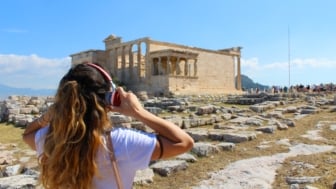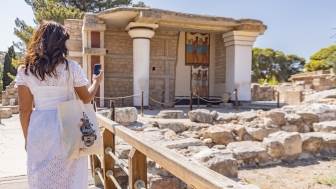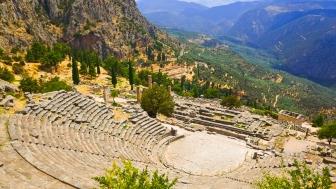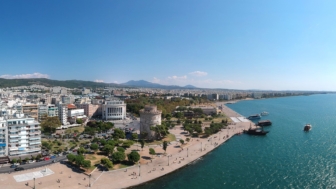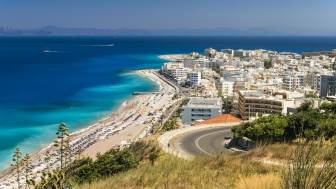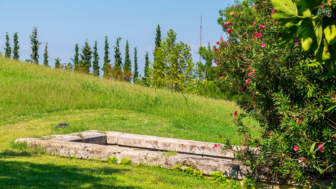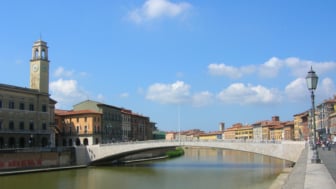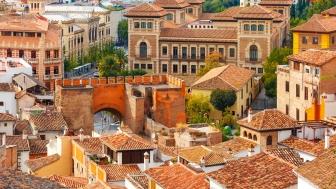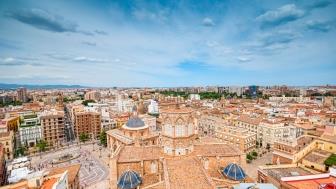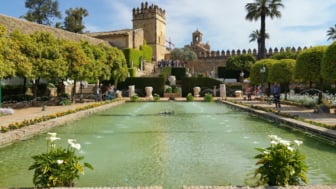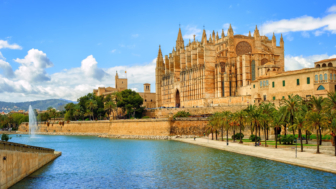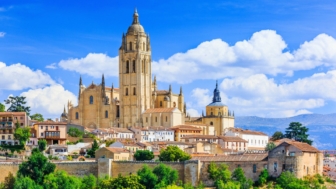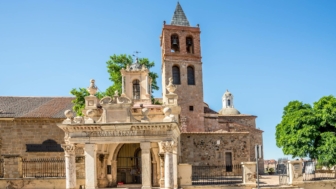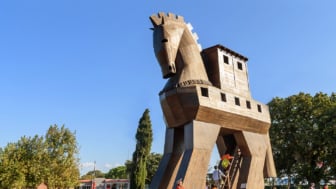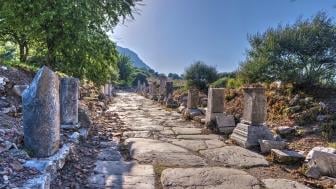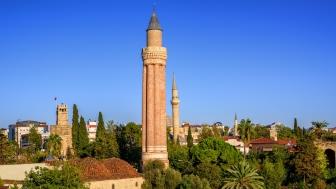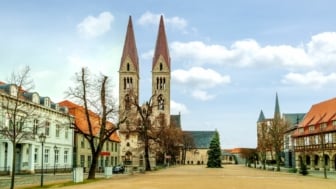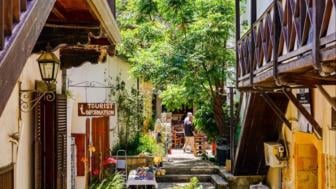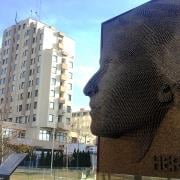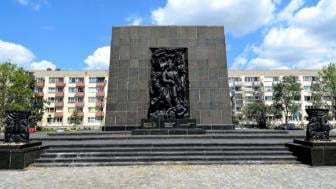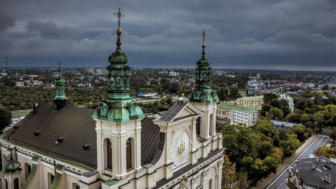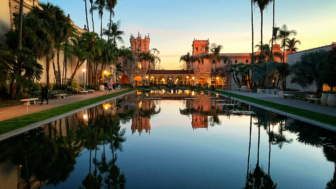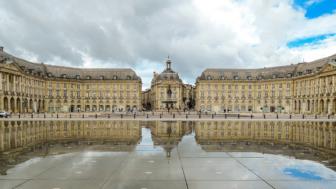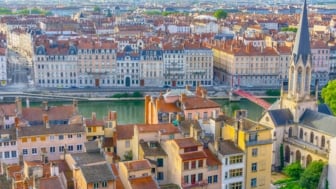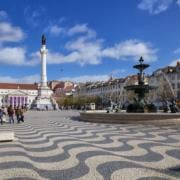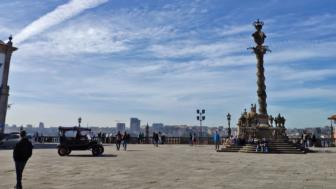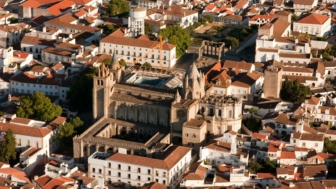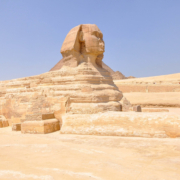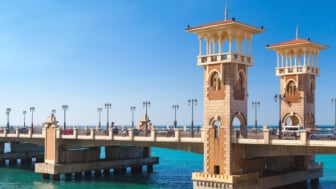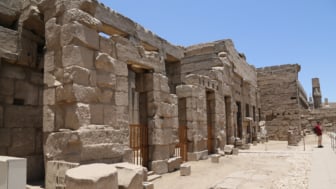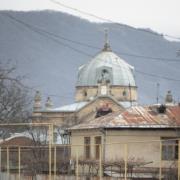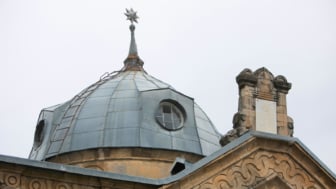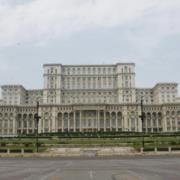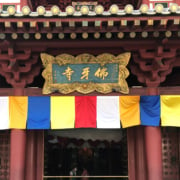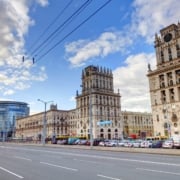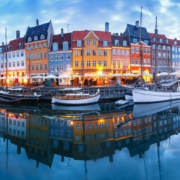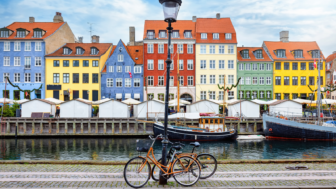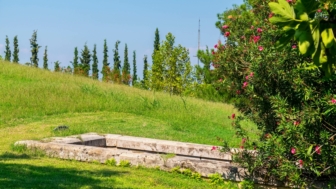The discovery of the royal tombs of Aigai of Philip II and Alexander IV, son of Alexander the Great and Roxane, in November 1977 is among the seminal moments of Greek archaeology. The importance of the finds and the wealth of grave goods that accompanied the illustrious dead transformed the history of ancient Greece and necessitated an innovative approach to their exhibition. After all, you do not put the remains of ancient Macedonia’s second-most- important king in an ordinary showcase.
The Museum of the Royal Tombs of Aigai
The Museum of the Royal Tombs of Aigai at Vergina is a masterpiece of ambience and architecture. The underground museum was inaugurated in 1997 to protect and present the structures and artefacts from the famous four-tomb grouping known as the “tomb cluster of Philip II”, containing the burials of Philip II, his sixth wife (Queen Meda of Odessos), Alexander IV (son of Alexander the Great and Roxana) and another wife of Philip (Nicesipolis?). Words cannot adequately describe the surreal but exciting sensation of entering the museum and discovering an otherworldly exhibition full of fabulous objects in gold, silver, and ivory.
The history of ancient Macedonia and Greece changed forever when Manolis Andronikos opened the door of Philip’s tomb. It is easy to get carried away by the historical and artistic significance of the exhibits and thus lose sight of what is most important: these objects belonged to real people, whose stories are as fascinating as the artefacts are supreme works of craftsmanship.
Greaves for a lame king.
King Philip II was a great warrior, and his military exploits turned Macedonia into a regional superpower. However, a life dedicated to warfare is bound to leave a few marks on whoever practices it, and Philip was no exception. According to various accounts, the Macedonian king received at least four severe wounds in various campaigns: a fracture of the clavicle (against the Illyrians), two leg wounds (against the Triballians and Scythians), and a right zygomatic complex fracture in the siege of Methoni (355 BCE). One of the leg wounds was so severe that it rendered Philip lame. The memory of this serious incident seems to survive in the greaves discovered in his tomb. One is significantly shorter than the other (up to 3.5 cm /1.4 in).
Conflagration
The expansive showcase dedicated to the funeral pyre of Philip II is astonishing. Visitors should take their time exploring the bewildering variety of artefacts and offerings that went up in flames to honour the dead king. The custom of cremation was originally the prerogative of the royal household, but gradually it expanded to members of the aristocracy and (eventually) every Macedonian. The funeral pyre of Philip, though, was one of a kind. In imitation of the Homeric practise of honouring the glorious dead, the Macedonians piled a stunning assortment of valuable offerings, foodstuff, and weapons in a monumental wooden building. Then, they placed the king on a gold and ivory couch with a gold crown of oak on his head and set the whole edifice on fire. His favourite hunting dogs and Thracian wife Meda followed Philip to the Underworld.
The gold larnax
As Philip II entered the theatre of Aigai in October 336 BCE, one of his bodyguards (Pausanias of Orestis) stabbed him in the ribs. The assassin was soon apprehended and suffered an ignominious end. As the king’s bones were carefully collected from the charred remains of his funeral pyre, washed in wine, wrapped in red cloth, and placed in a gold larnax (box), the body of Pausanias was hung on a cross above the royal tomb for all to see. It remained there for some time, and then it was cast into the sea (the traditional punishment for royal assassins). His two assistants were executed, and their corpses were left to rot on top of Philip’s grave.
The gold and purple fabric
The massive fire that consumed the king’s body and a whole bunch of his wealth was not the only otherworldly sight to mark the end of an era. Meda of Odessos was the daughter of King Cothelas of the Getae, a Thracian tribe inhabiting either side of the lower Danube to the north of Philip’s kingdom. When the Macedonian king died, Meda was determined to follow her people’s tradition and accompany Philip on his long one-way voyage to the Underworld. The Macedonians had no such expectation of their queens, but Meda got her wish. Her remains were wrapped in an exquisite gold and purple fabric laid in another gold larnax (less elaborate than Philip’s) and buried in a separate room adjacent to the one occupied by her beloved consort.
-
Duration: 1h 30min
-



